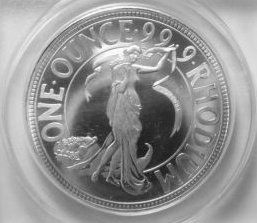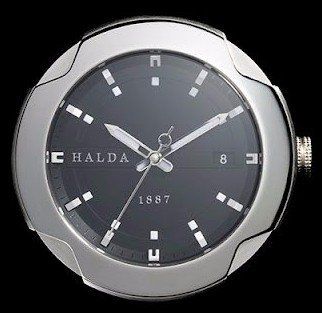Where does rhodium occur in nature?
The primary sources for rhodium are in Russia, South Africa, and Canada. The industrial extraction of rhodium is complicated by the fact that it occurs naturally with numerous other native ores. Mixed with other metals such as platinum, silver and nickel, the separation and refinement of rhodium ores are quite expensive. Only about 9-10 metric tons are produced annually worldwide. As of this writing, its trading range on the world spot metals market are quite volatile. The costs per troy ounce of rhodium is around $1400.
From a decorative standpoint, what makes rhodium so desirable?
Among numerous other physical characteristics such as hardness, and high reflectivity, rhodium has an extraordinary resistance to most acids and corrosive substances. It is one of the few "white" metals that will remain bright and reflective under all atmospheric conditions at ordinary temperatures. As a result, electroplated surfaces that utilize rhodium plating remain scratch resistant, bright and attractive for many years.
What were some of the early decorative usages for rhodium electroplating?
Rhodium was used as a novelty in the early 1920's to demonstrate its chrome-like brightness to prospective customers by the plating trade. Commercially, rhodium's presence grew quickly by the mid-1930's. Rhodium electroplated finishes on Art Deco style cigarette lighters, writing instruments and other fashion accessories became very popular. Some excellent examples of rhodium plated products were produced by the Ronson lighter company ("Fine Line"style circa. 1934) and on fashion jewelry from companies such as Cartier. By the start of WW ll, rhodium as well as the other members of the platinum metals group were declared strategic metals and their use became restricted for military applications only. It wasn't until the late 1950's that rhodium plating began to re-emerge as a decorative finish.
Typically, what decorative metals are plated with rhodium?
Rhodium can be plated onto just about any metal surface. It is the metal of choice for white gold watch finishes, and used to give superior durability, and corrosion protection on watches that were originally chrome plated. Stainless steel, or gold watches can also be plated with Rhodium to change their color from dull, or gold to mirror like silver.
What are the typical plating thicknesses for Rhodium finishes?
The plating thickness for decorative rhodium platings used by jewelry manufacturer can range from .05 microns to 1.5 microns. For most decorative applications, a thickness from .10 microns to .50 microns are utilized for maintaining long term "brightness". Industrial platings for specialized applications may utilize thicknesses up to 5.0 microns. However, rhodium finishes above 2.0 microns have a tendency to be brittle and will need special annealing processes to relieve the stress within the rhodium plated layer.
Will a thicker rhodium plating conceal scratches and surface blemishes?
No, as a rule the electroplating process does not hide surface imperfections. Therefore refinishing must be done prior to the plating process to give the desired results.
How scratch resistant are rhodium plated objects?
Among the "white" decorative platings, rhodium is considered "best in class" in terms of toughness and wear resistance. Most items plated with at least .5 microns of rhodium are usually more scratch resistant than prior to being plated! Electroplated rhodium has a hardness ranging from 400-550 vickers which makes it very resistant to incidental abrasions. (Over sterling silver objects, rhodium plating prevents the formation of fine scratches that occur from normal handling and cleaning.)
This article copyright 2011 by The Time Preserve. All rights reserved. This material may not be duplicated or copied without expressed written permission. Thank-you


















